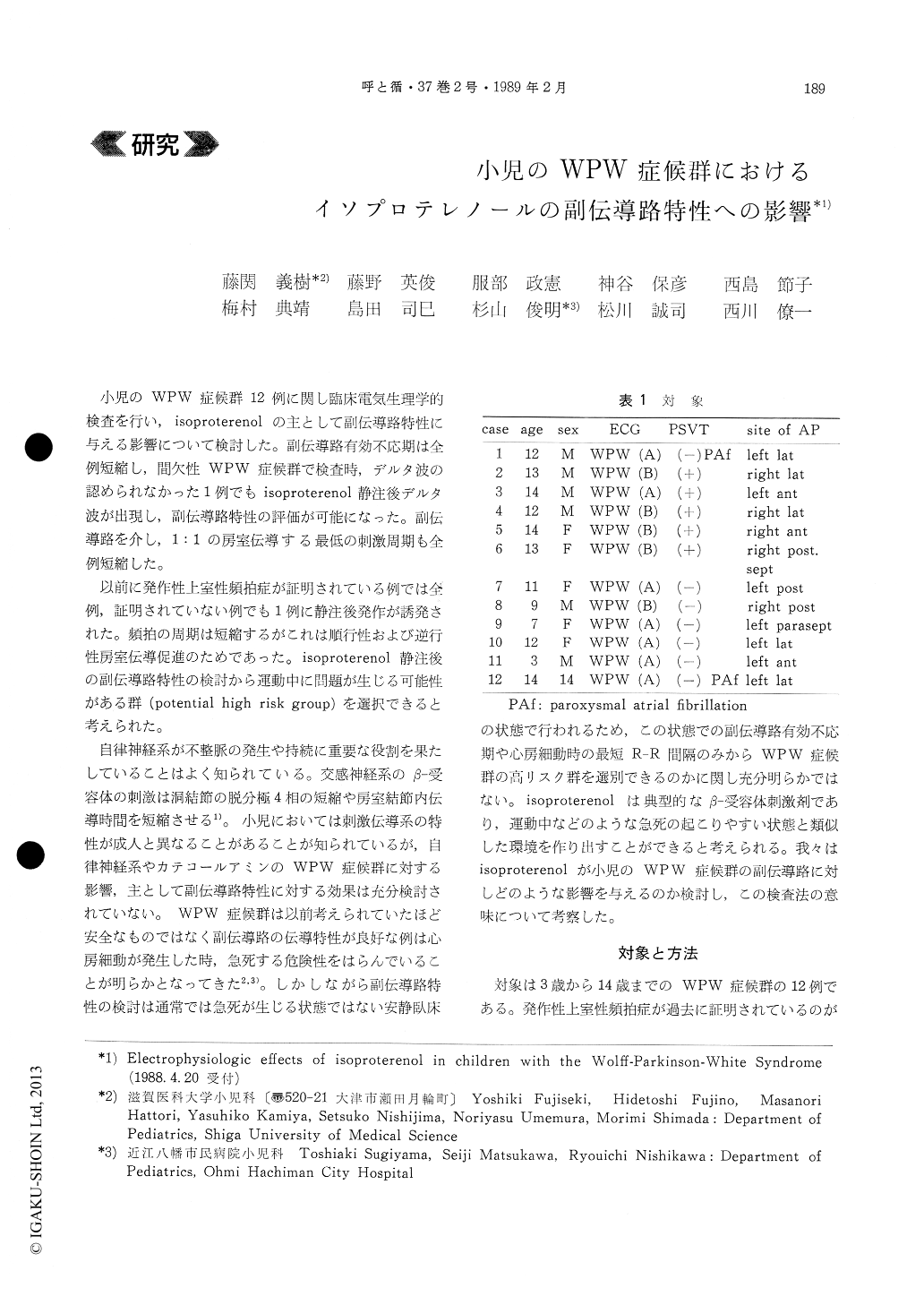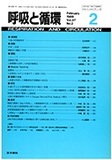Japanese
English
- 有料閲覧
- Abstract 文献概要
- 1ページ目 Look Inside
小児のwpw症候群12例に関し臨床電気生理学的検査を行い,isoproterenolの主として副伝導路特性に与える影響について検討した。副伝導路有効不応期は全例短縮し,間欠性WPW症候群で検査時,デルタ波の認められなかった1例でもisoproterenol静注後デルタ波が出現し,副伝導路特性の評価が可能になった。副伝導路を介し,1:1の房室伝導する最低の刺激周期も全例短縮した。
以前に発作性上室性頻拍症が証明されている例では全例,証明されていない例でも1例に静注後発作が誘発された。頻拍の周期は短縮するがこれは順行性および逆行性房室伝導促進のためであった。isoproterenol静注後の副伝導路特性の検討から運動中に問題が生じる可能性がある群(potential high risk group)を選択できると考えられた。
12 children with the Wolff-Parkinson-White (WPW) syndrome underwent electrophysiologic study before and after the intravenous administration of isopro-terenol. Effective refractory period of the accessory pathway and shortest paced cycle length with 1 : 1 atrioventricular (A-V) conduction via the accessory pathway were shortened after intravenous isopro-terenol in all patients.
Orthodromic reciprocating tachycardia was induced after isoproterenol in one patient who did not documented tachycardia attack or palpitation before.Anterograde A-V conduction via A-V node and retrograde V-A conduction via accessory pathway were enhanced. Thus, tachycardia cycle length was shortened.
Potential high risk group patient who develop hazardous atrial fibrillation during exercise in the WPW syndrome may be selected by isoproterenol infusion.

Copyright © 1989, Igaku-Shoin Ltd. All rights reserved.


